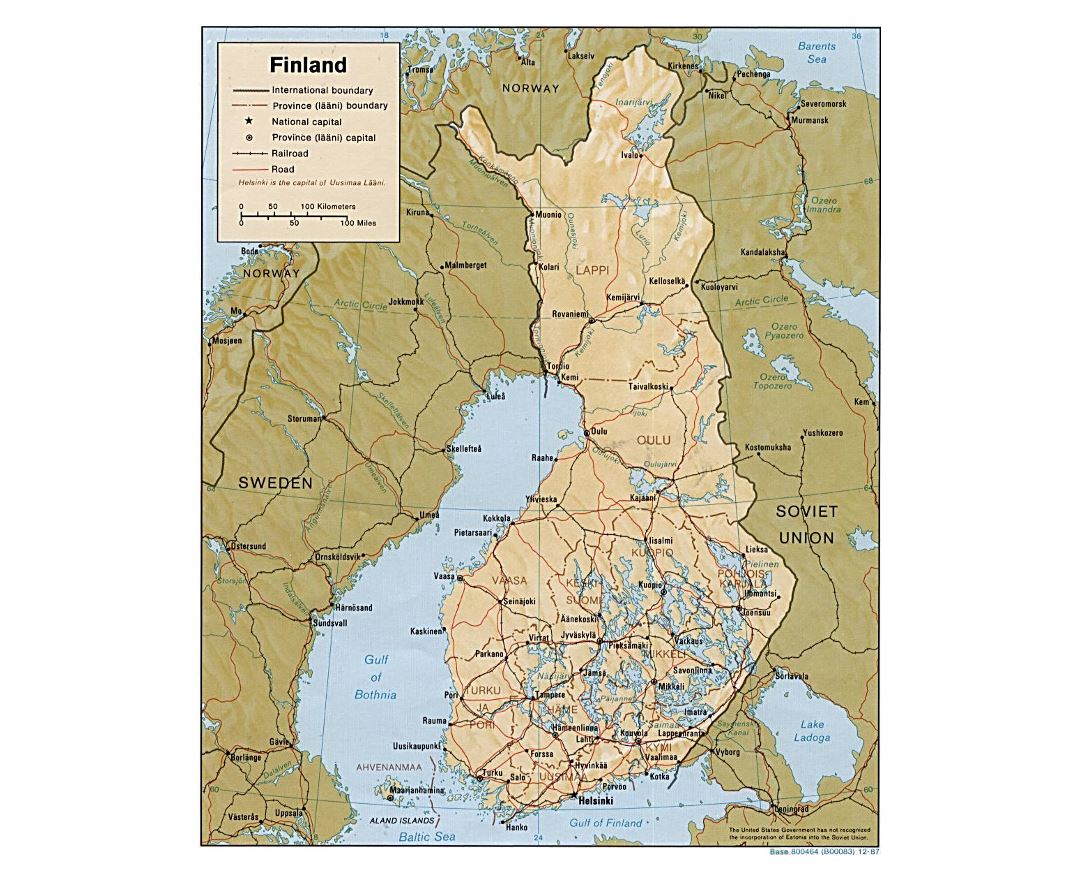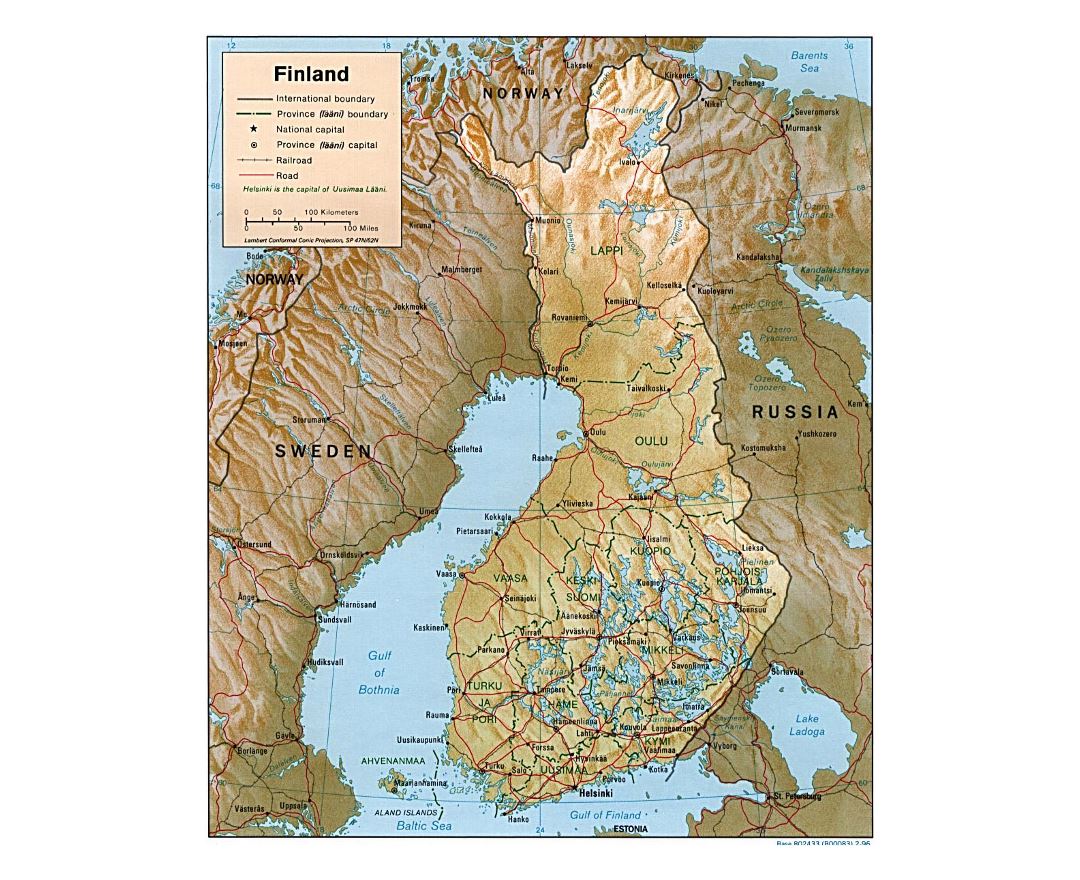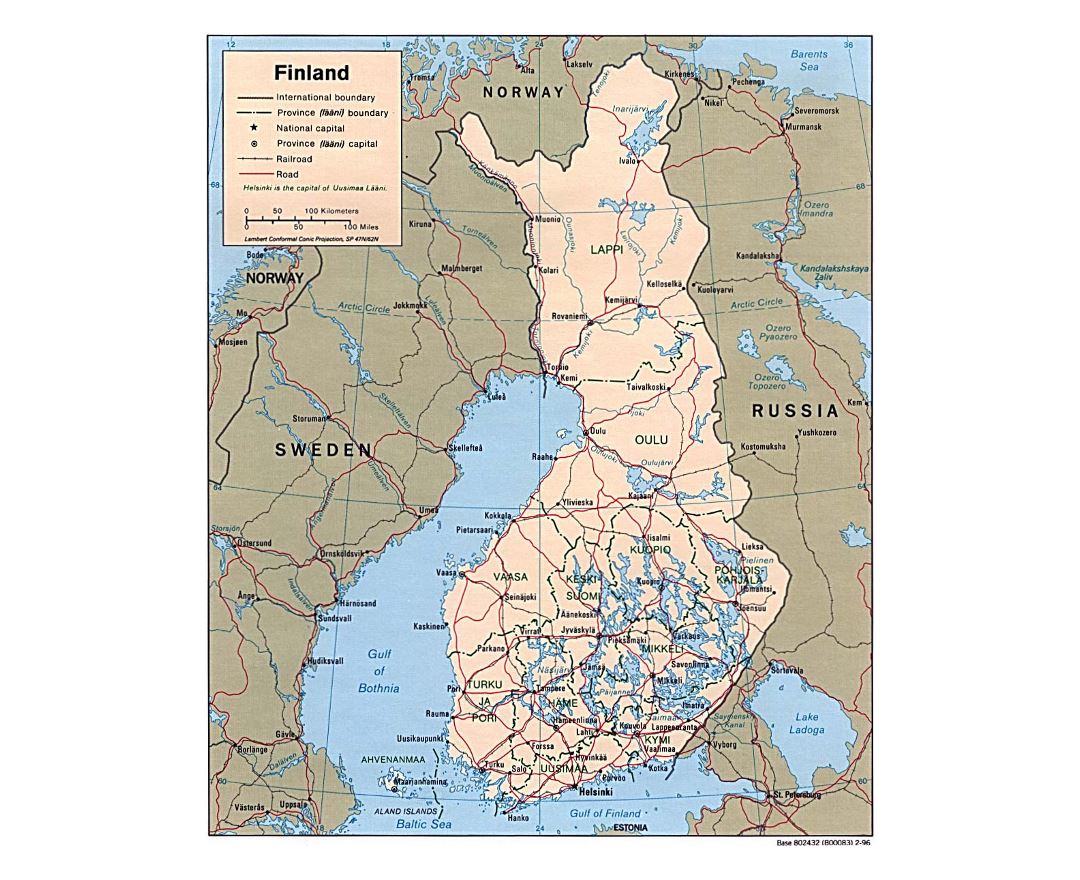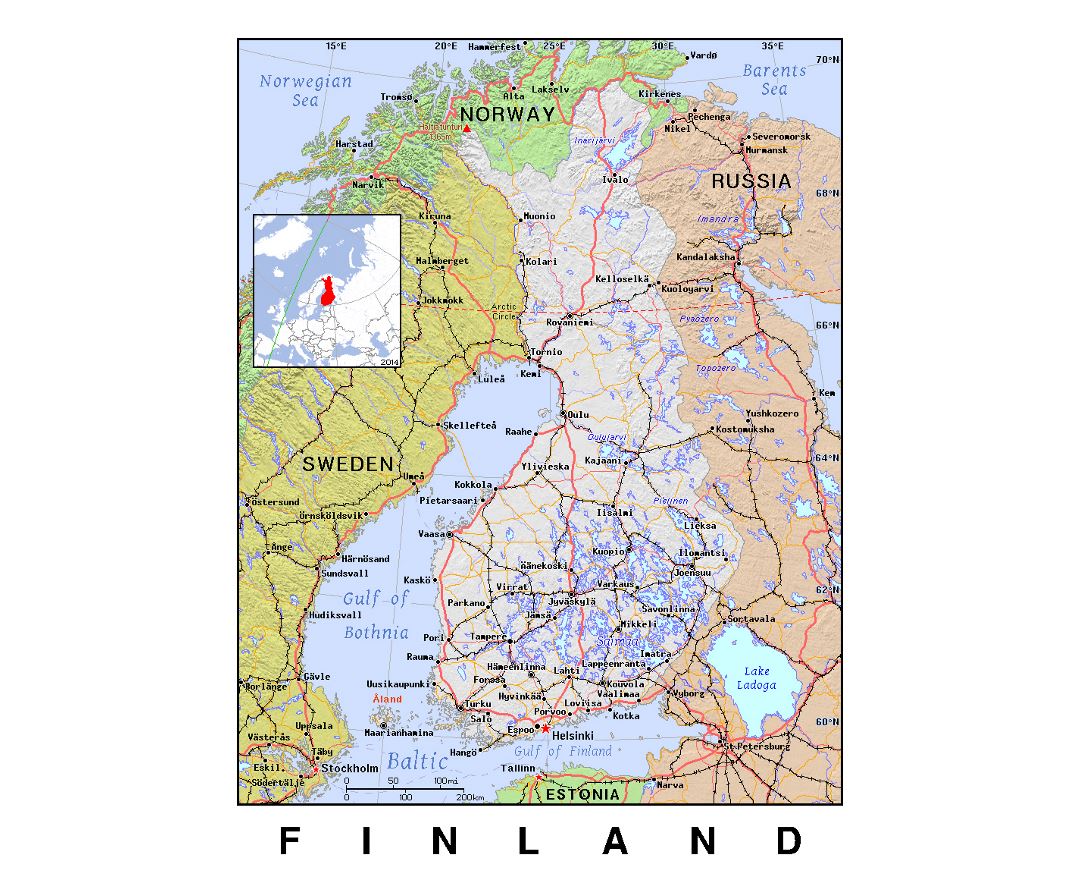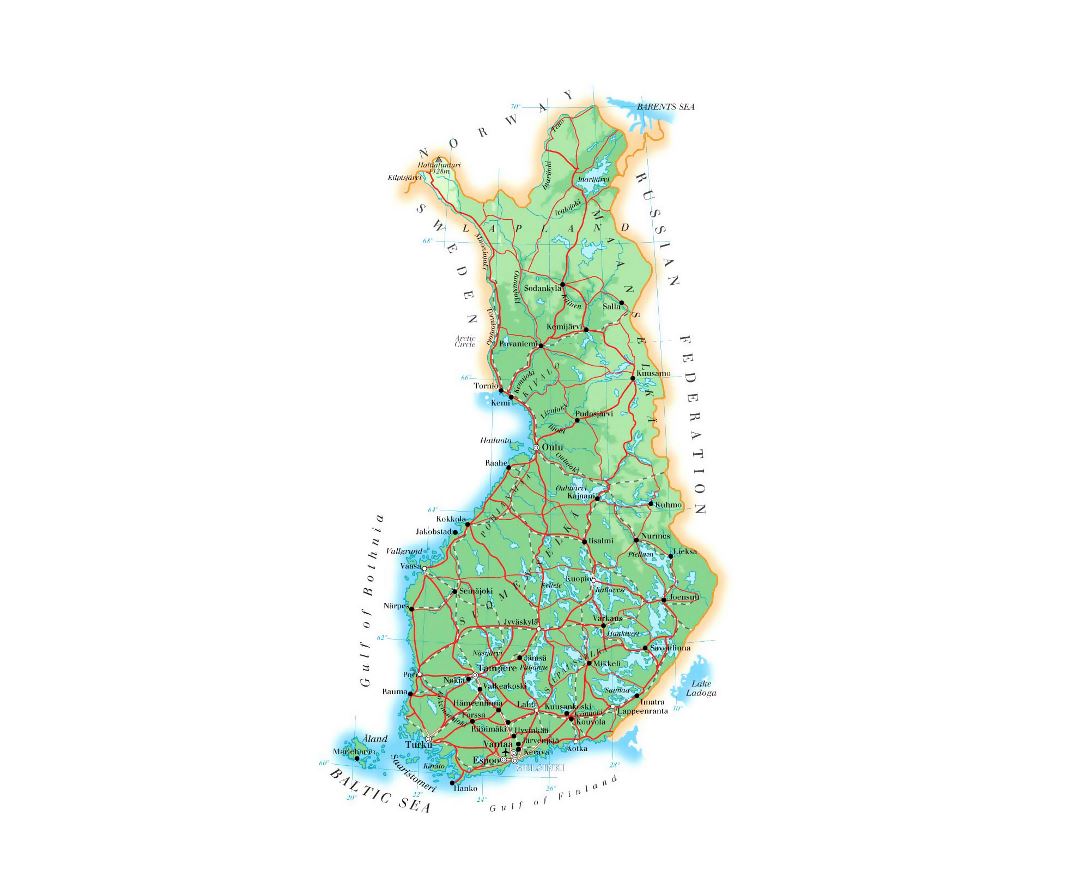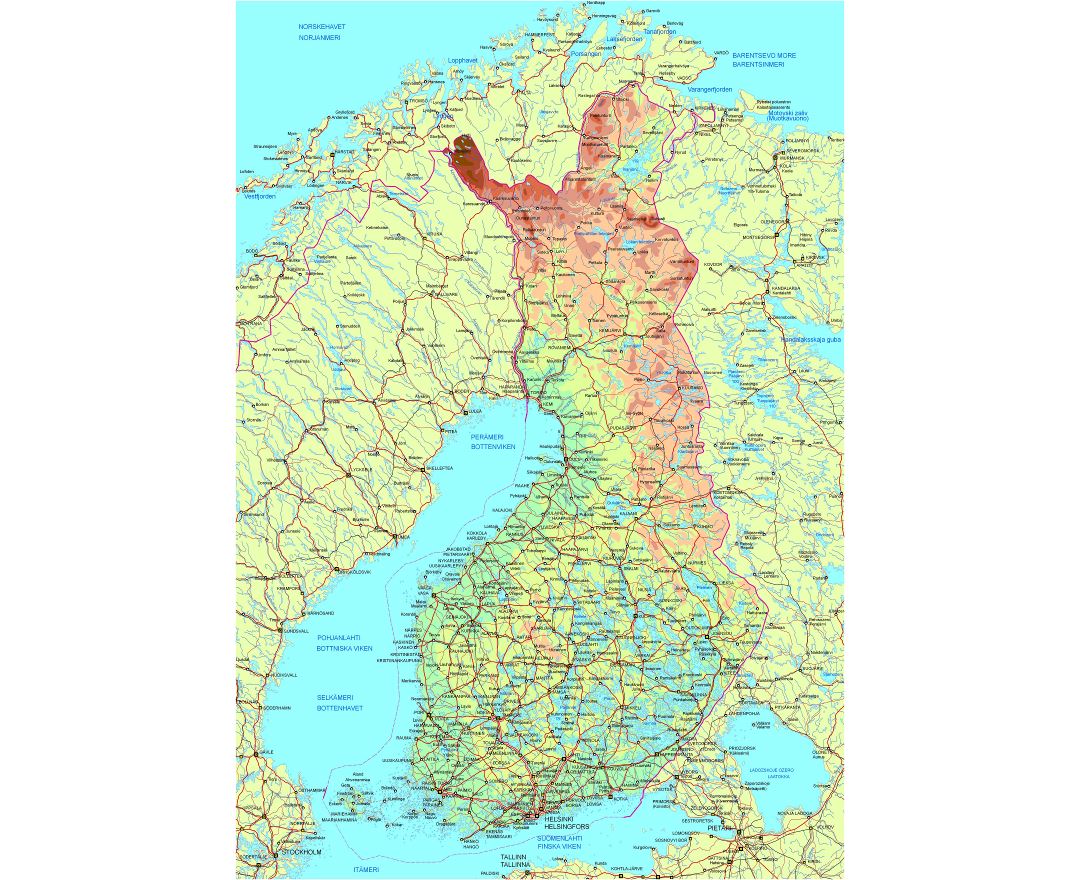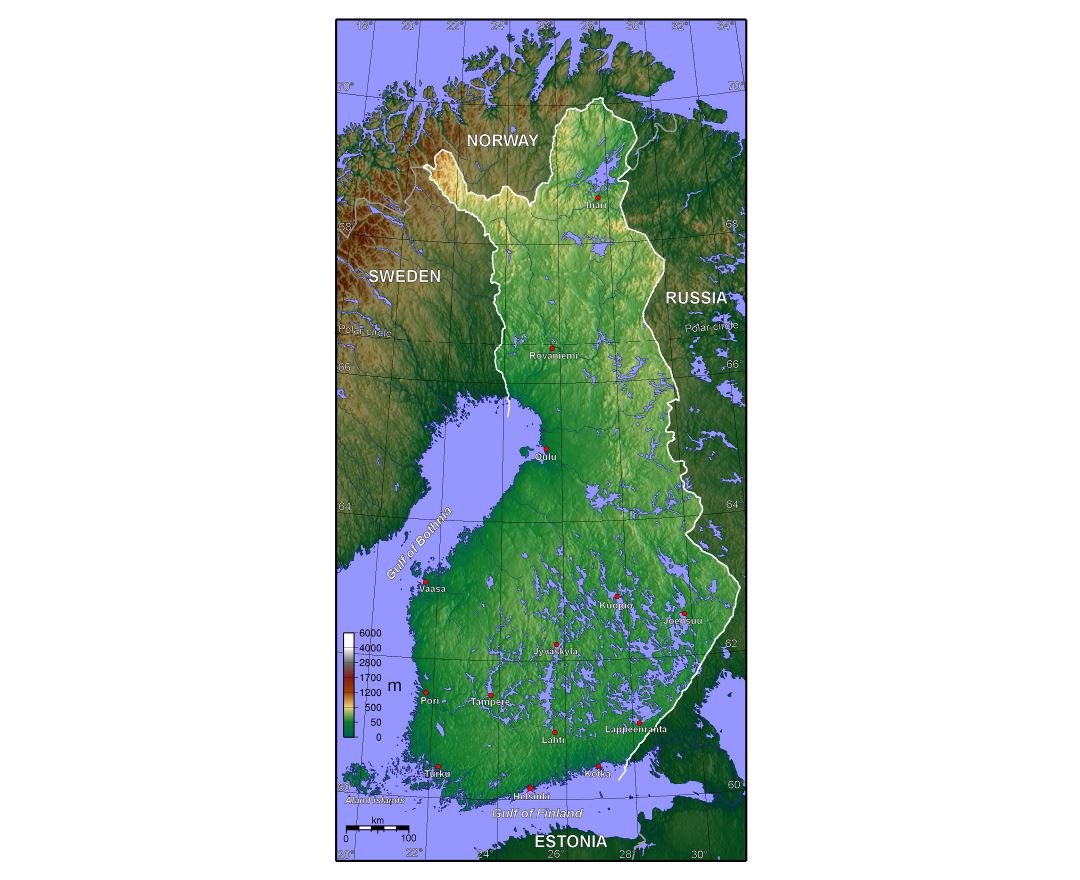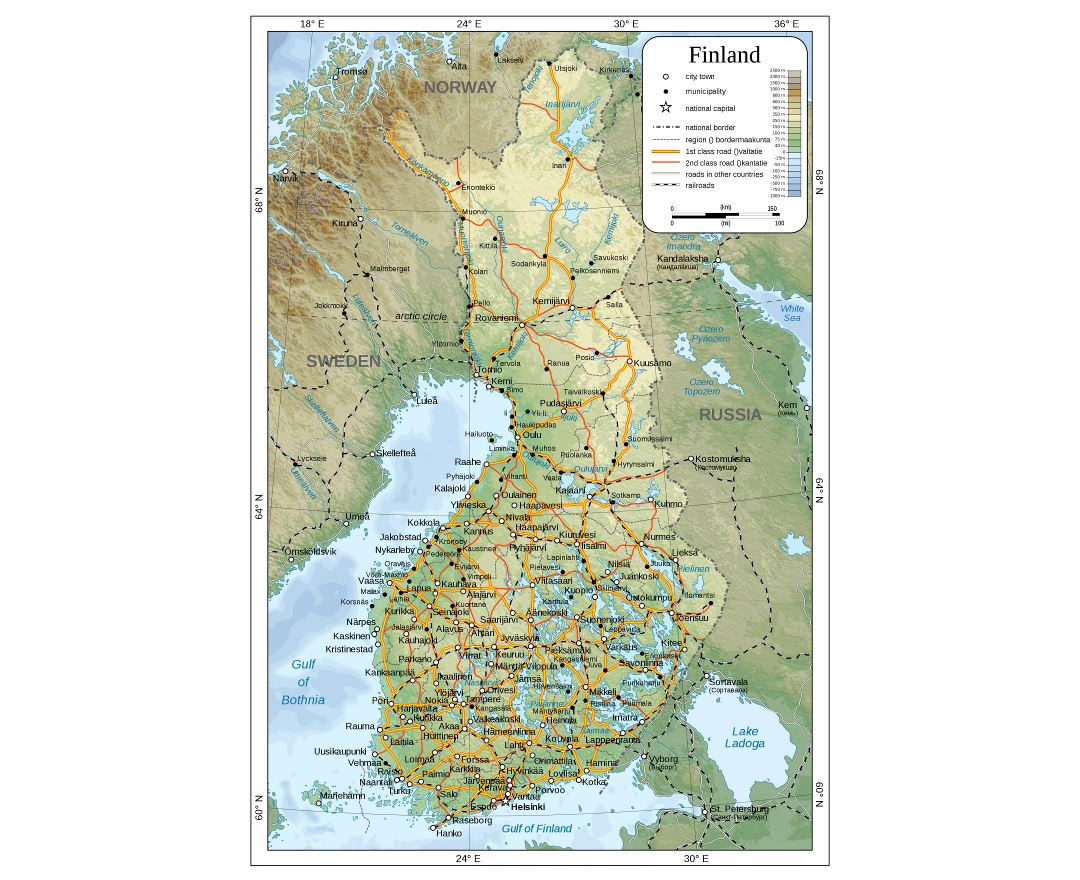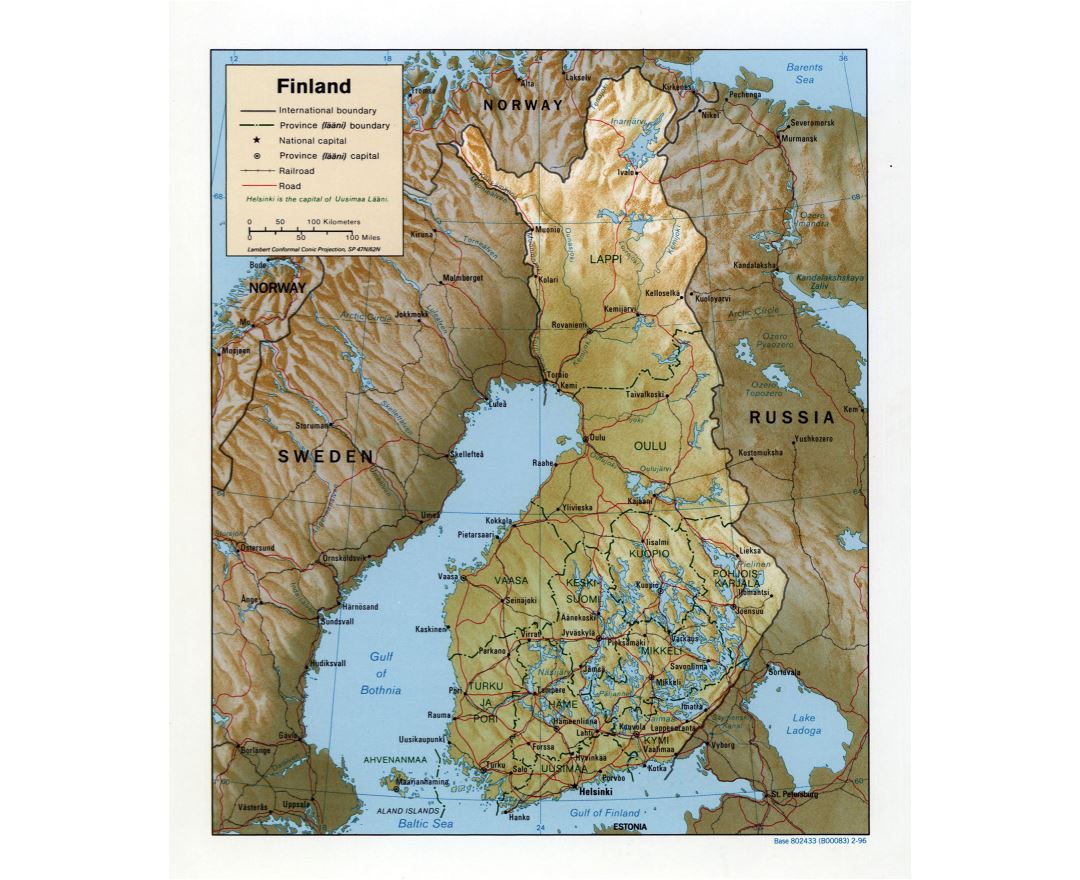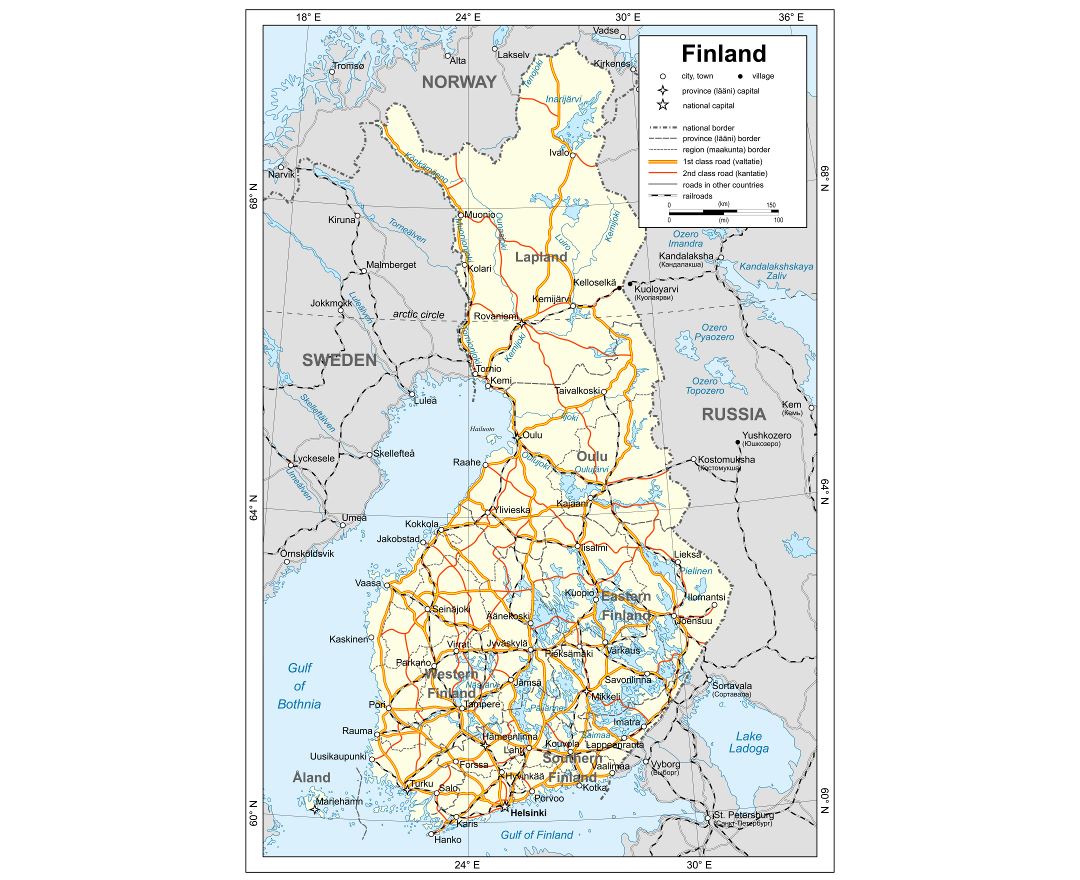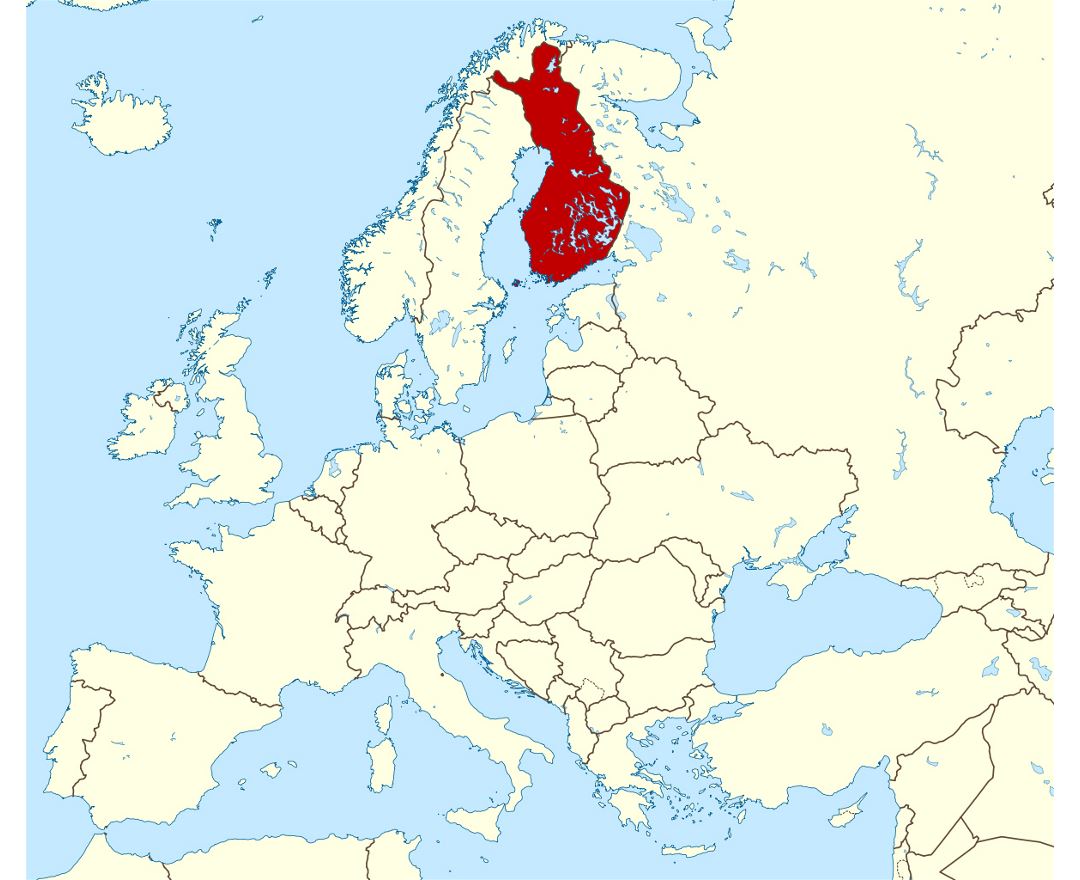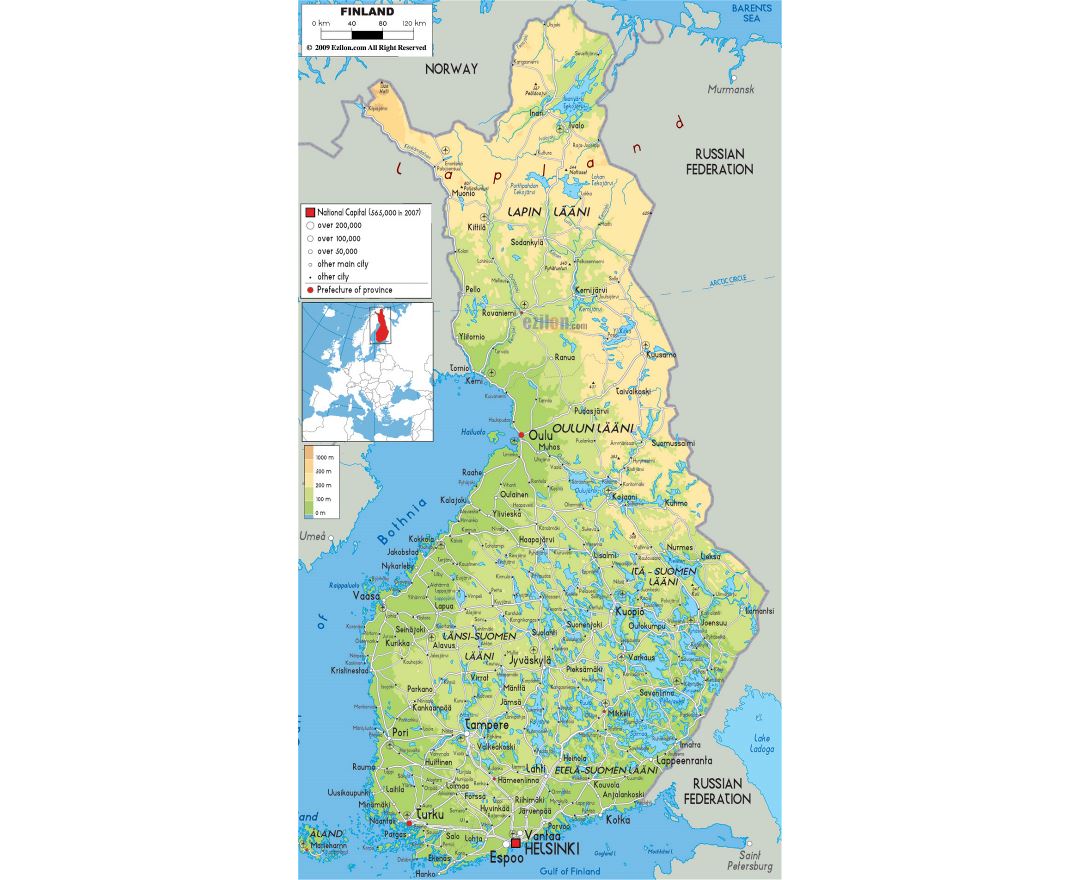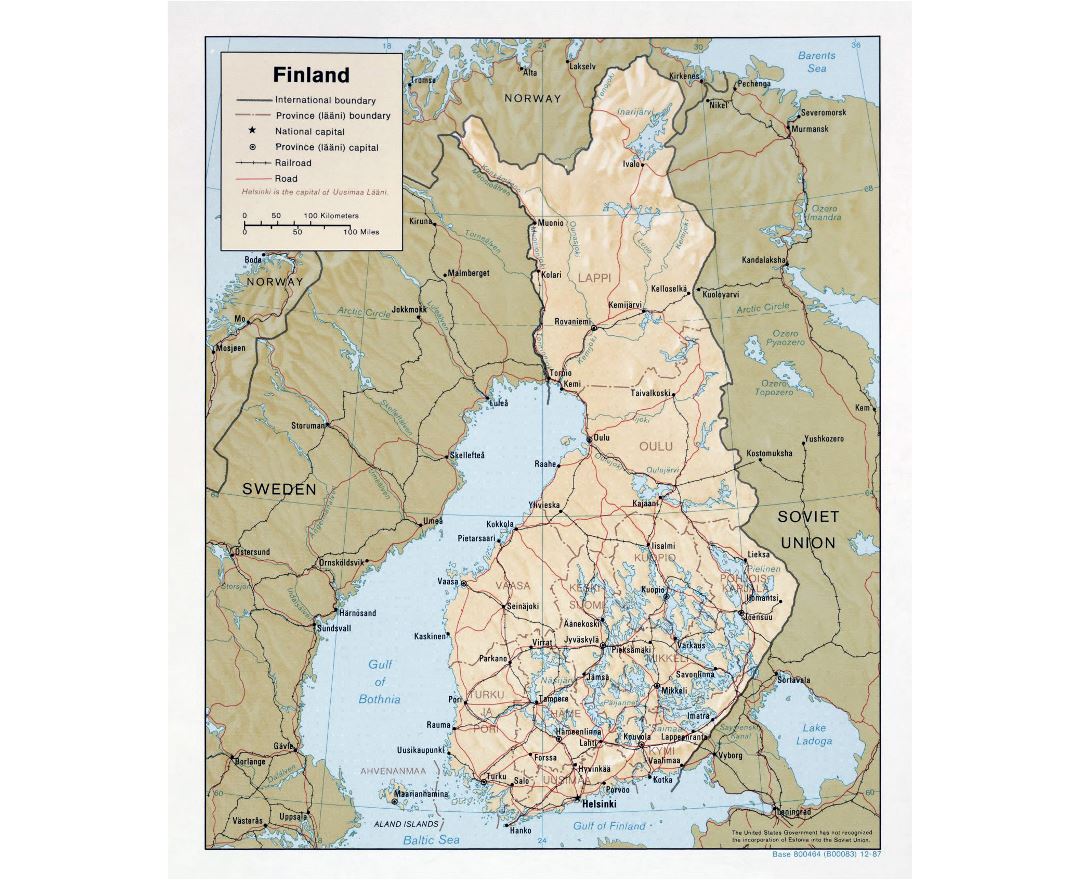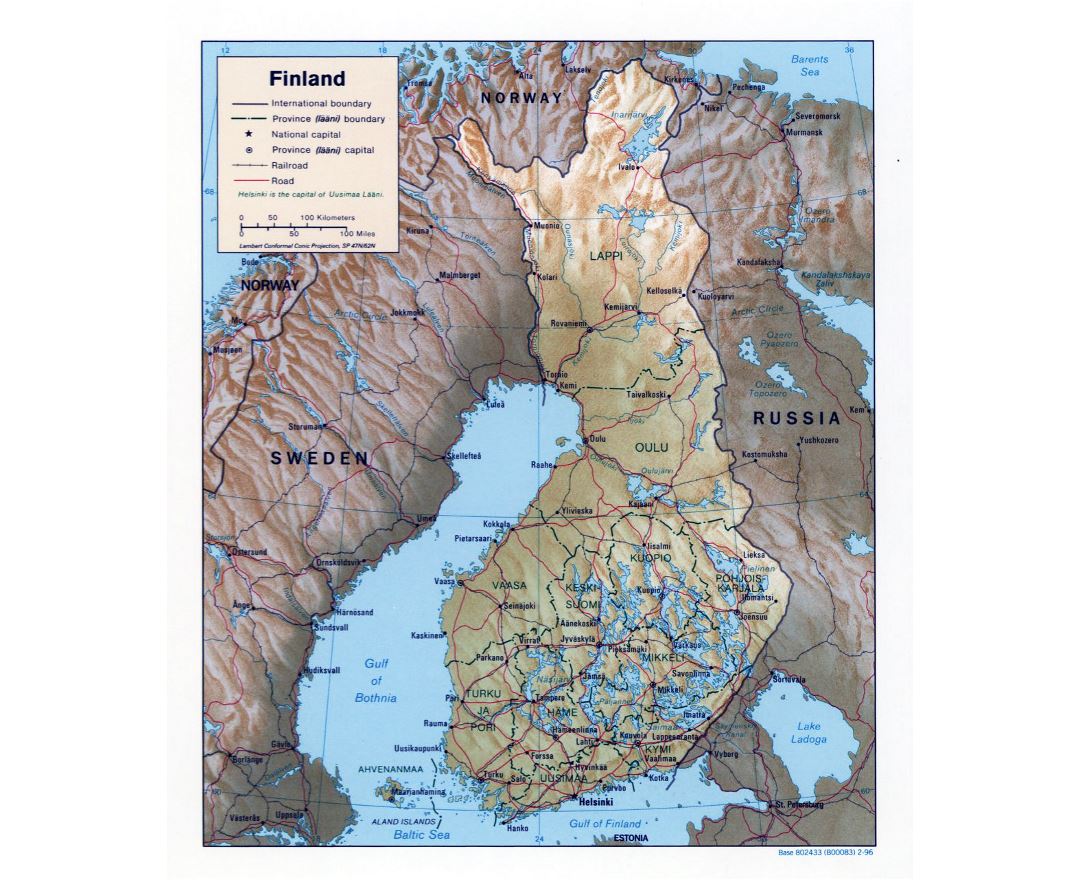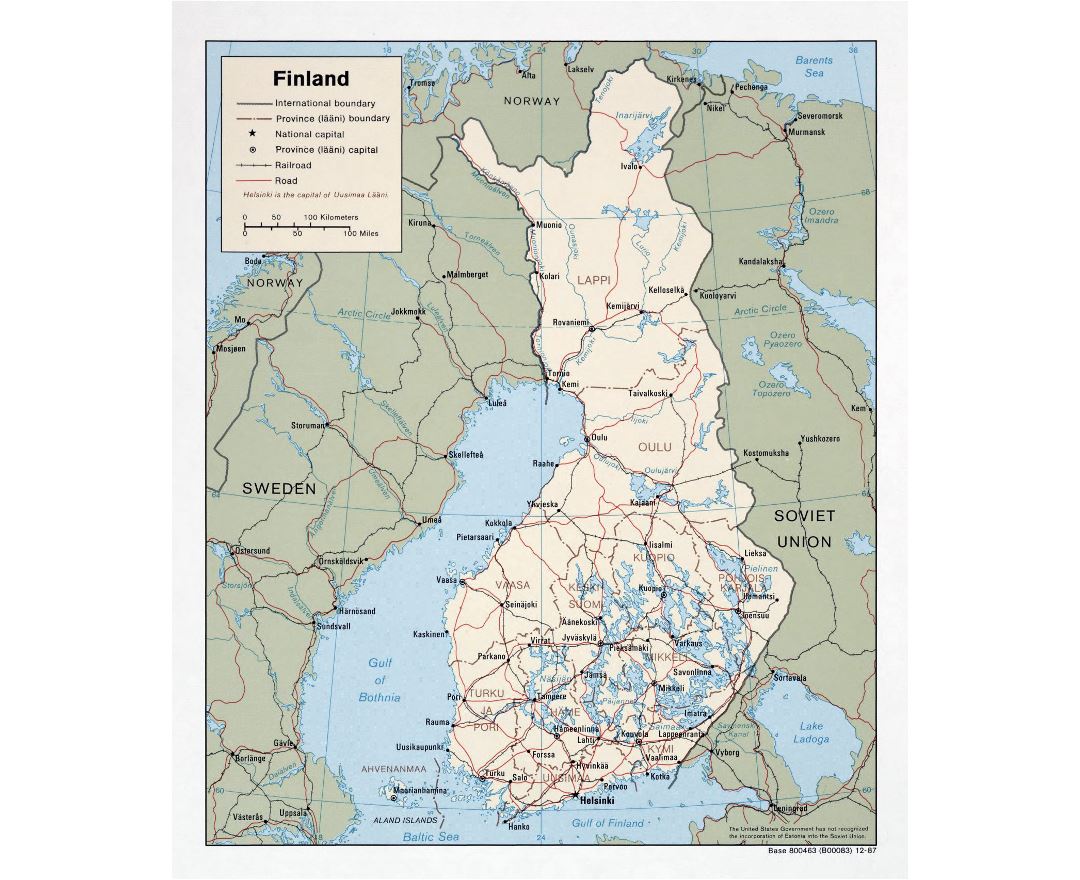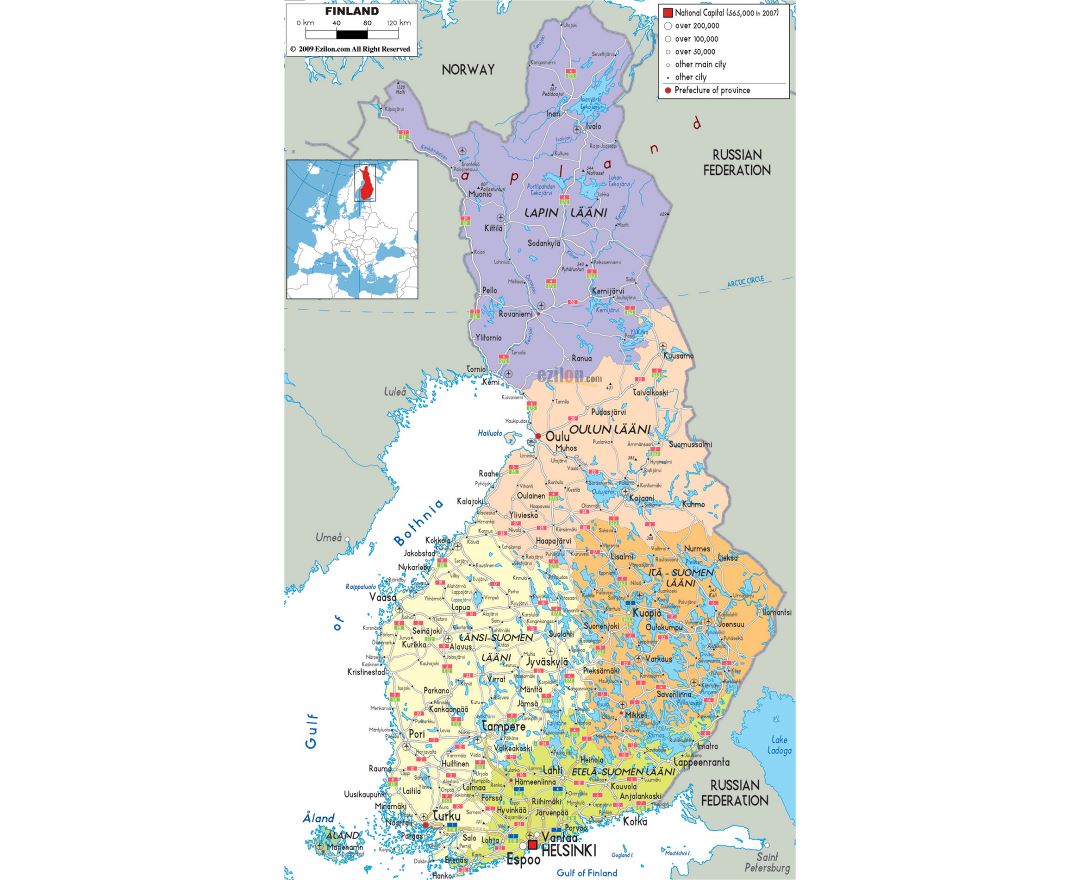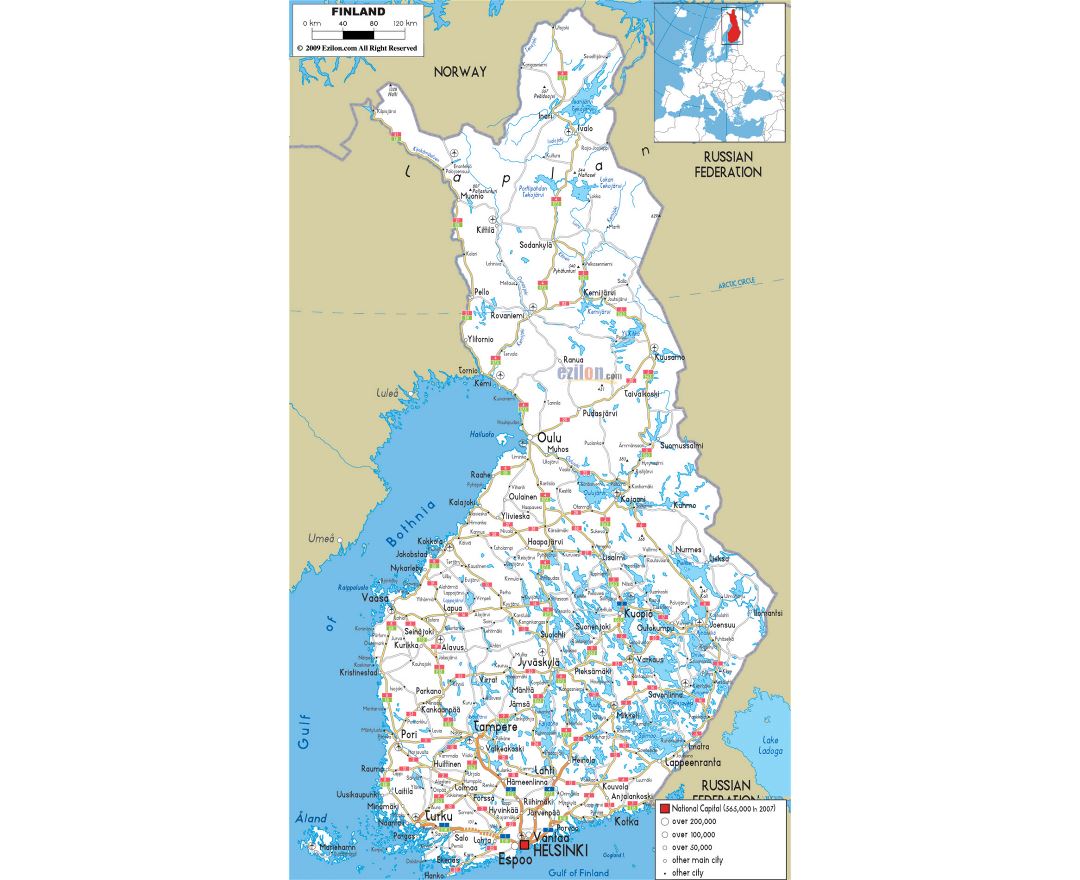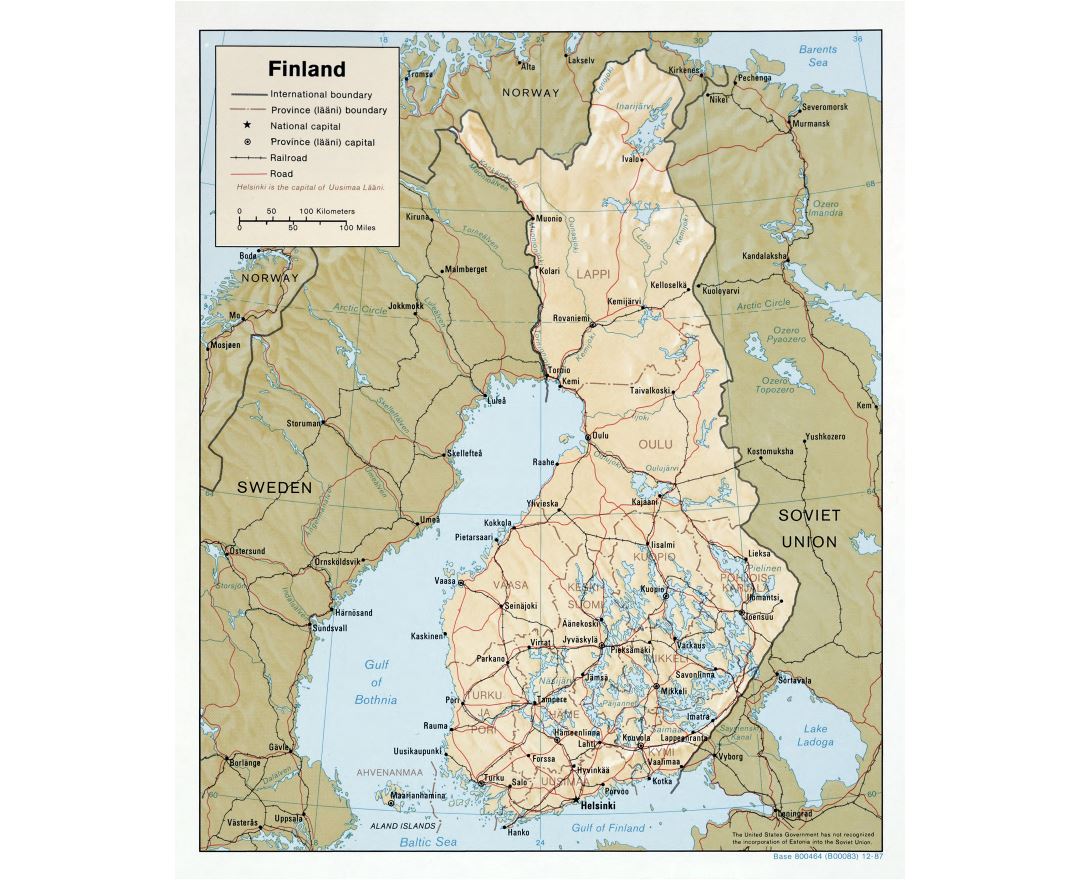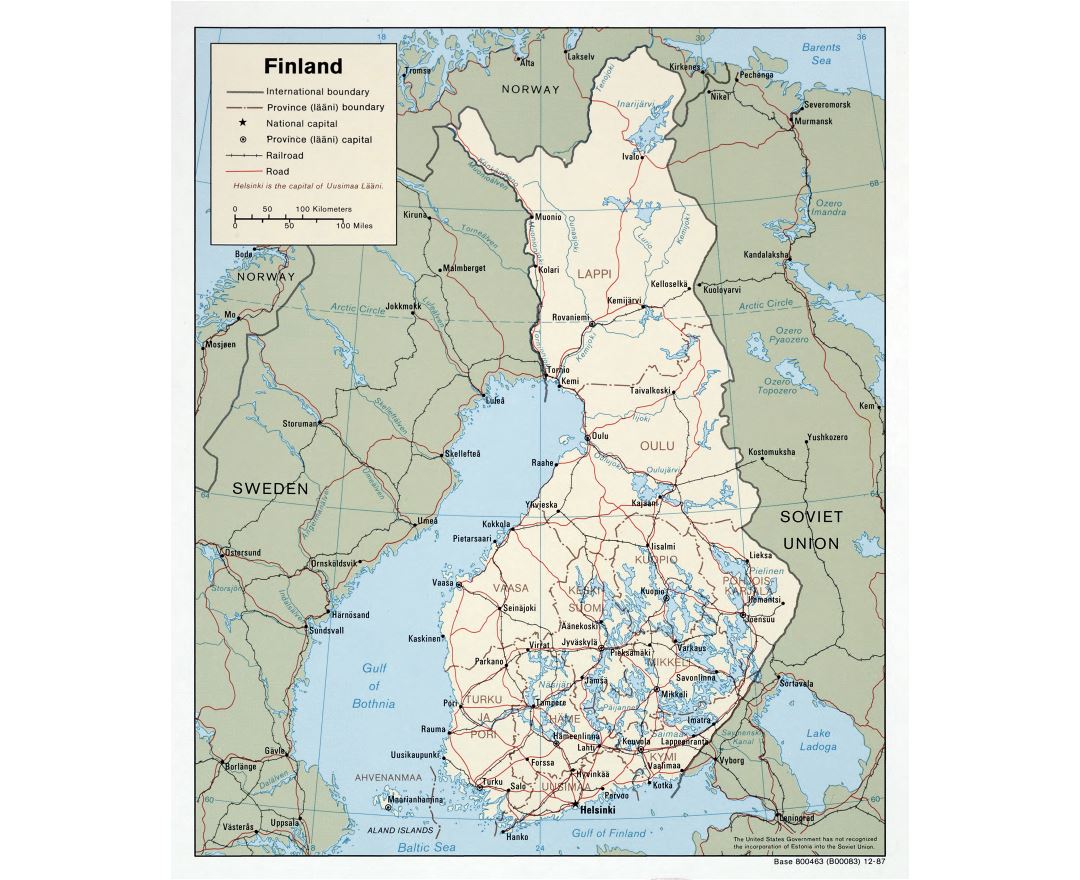Finland
Finland, officially the Republic of Finland, is a sovereign state in Europe. A peninsula with the Gulf of Finland to the south and the Gulf of Bothnia to the west, the country has land borders with Sweden to the northwest, Norway to the north, and Russia to the east. Estonia is south of the country across the Gulf of Finland. Finland is situated in the geographical region of Fennoscandia, which also includes Scandinavia. Finland's population is 5.5 million (2014), staying roughly on the same level over the past two decades. The majority of the population is concentrated in the southern region. In terms of area, it is the eighth largest country in Europe and the most sparsely populated country in the European Union.
Finland is a parliamentary republic with a central government based in the capital Helsinki, local governments in 317 municipalities, and an autonomous region, the Åland Islands. Over 1.4 million people live in the Greater Helsinki metropolitan area, which produces a third of the country's GDP. From the late 12th century, Finland was an integral part of Sweden, a legacy reflected in the prevalence of the Swedish language and its official status. In the spirit of the notion of Adolf Ivar Arwidsson (1791–1858), "we are no-longer Swedes, we do not want to become Russians, let us therefore be Finns", the Finnish national identity started to establish. Nevertheless, in 1809 Finland was incorporated into the Russian Empire as the autonomous Grand Duchy of Finland. In 1906, Finland became the second nation in the world to give the right to vote to all adult citizens and the first in the world to give full suffrage to all adult citizens. Following the 1917 Russian Revolution, Finland declared itself independent.
In 1918, the fledgling state was divided by civil war, with the Bolshevik-leaning "Reds" supported by the equally new Soviet Union, fighting the "Whites", supported by the German Empire. After a brief attempt to establish a kingdom, the country became a republic. During World War II, the Soviet Union sought repeatedly to occupy Finland, with Finland losing parts of Karelia, Salla and Kuusamo, Petsamo and some islands, but retaining independence. Finland joined the United Nations in 1955 and established an official policy of neutrality. The Finno-Soviet Treaty of 1948 gave the Soviet Union some leverage in Finnish domestic politics during the Cold War era. Finland joined the Organisation for Economic Co-operation and Development (OECD) in 1969, the NATO Partnership for Peace on 1994, the European Union in 1995, the Euro-Atlantic Partnership Council in 1997, and finally the Eurozone at its inception in 1999.
Finland was a relative latecomer to industrialisation, remaining a largely agrarian country until the 1950s. It rapidly developed an advanced economy while building an extensive Nordic-style welfare state, resulting in widespread prosperity and one of the highest per capita incomes in the world. However, since 2012 Finnish GDP growth has been negative, with a preceding nadir of - 8% in 2009. Finland is a top performer in numerous metrics of national performance, including education, economic competitiveness, civil liberties, quality of life, and human development. In 2015, Finland was ranked first in the World Human Capital and the Press Freedom Index, and as the most stable country in the world in the Failed States Index, and second in the Global Gender Gap Report. A large majority of Finns are members of the Evangelical Lutheran Church, though freedom of religion is guaranteed under the Finnish Constitution.

